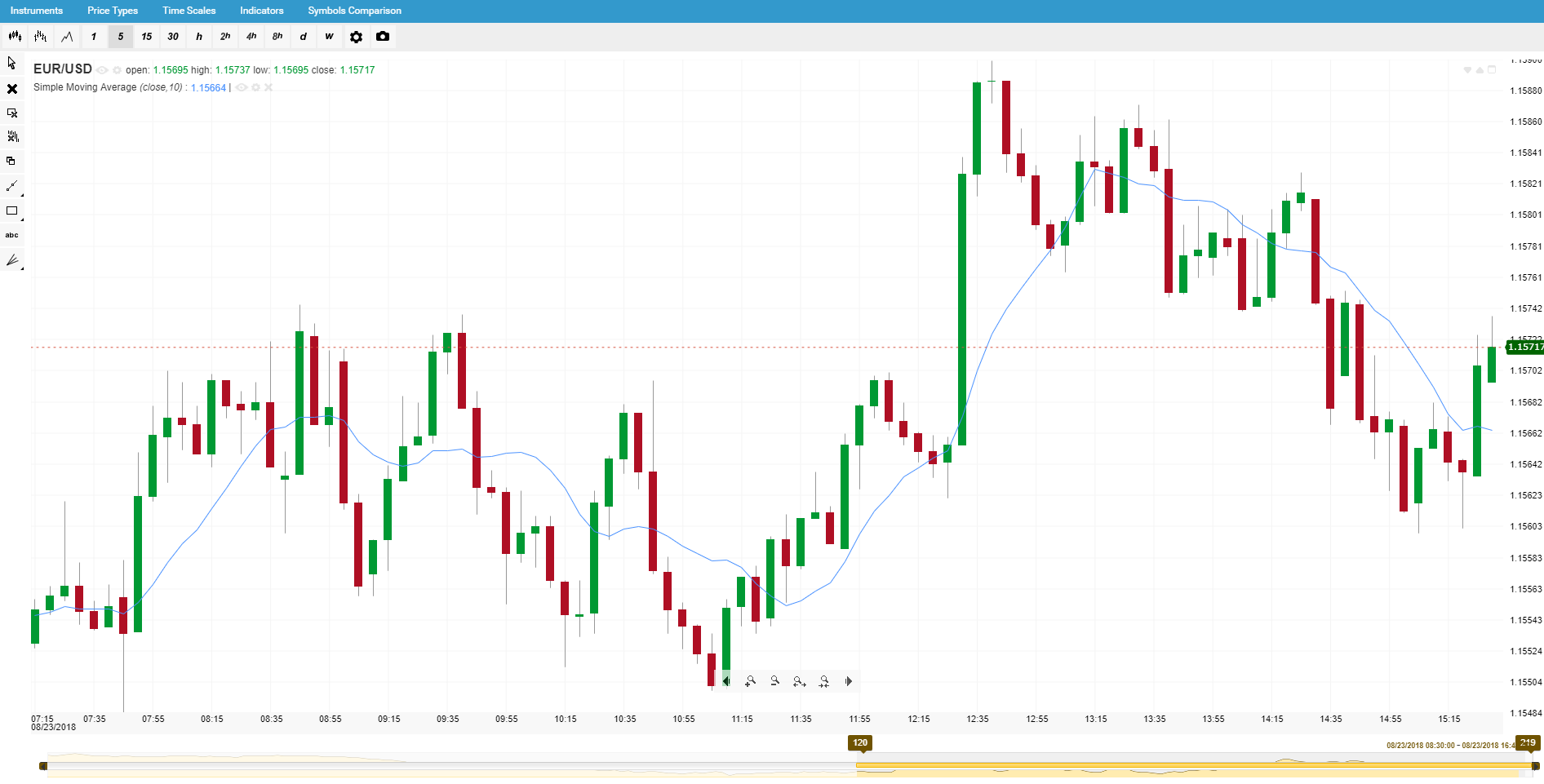Products You May Like
Five patterns for new forex traders
Being new to trading
forex can often feel like wading out into dark choppy waters. It’s
intimidating, unknown and overwhelming. Continuing the water metaphor, the
internet is sea of information regarding trading, reading charts and
extrapolating information from them.
Figuring out the best indicators for
your strategy and trading goals can take years of trial and error, fine tuning
and endless small adjustments. You only just started trading a few months ago,
trading with actual assets for even less, so you probably don’t know where to
get started. Luckily this article will introduce you to 6 indicators which are
popular amongst new traders.
1. SMA – Simple
Moving Average
The Simple Moving Average indicator
takes the sum of all the closing prices of a specific time period divided by
the time intervals. That makes it sound a lot more complex than it actually is,
in simple terms let’s say you want the SMA of the last 10 days, you would add
the closing prices of the last ten days and then divide them by 10.
Depending on the time frame that is
used to calculate the SMA it can show price changes rapidly – if the SMA is
calculated on a short timeline or slower to react (but better at revealing long
term trends) when the timeline is longer.
Short-Term
Longer-Term
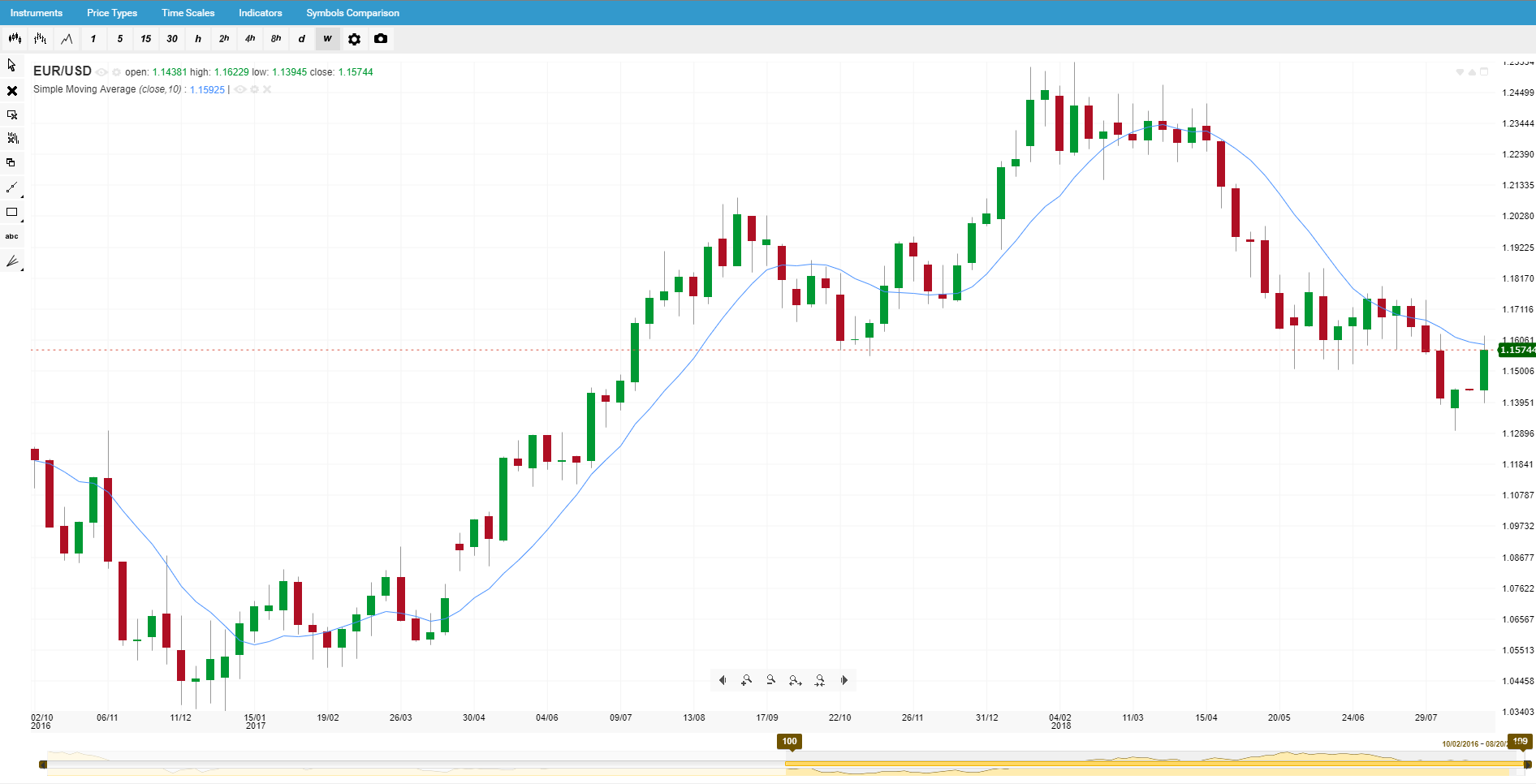
As you can see the longer term SMA
seems to “normalize” the price movement giving you a better gauge of emerging
longer-term trends, where as the first shorter term SMA shows smaller fluctuations
in the price, which is a better analytical tool for traders using shorter-term
strategies such as intraday.
2..RSI –
Relative Strength Index
As the name indicates RSI is a gauge
of a trend’s momentum that can indicate whether the asset being analyzed is in
the overbought or oversold region.
The calculation of this indicator is
relatively easy, please note that RS in the equation below is the Average gains
during upswings/Averages Loss during downturns within the timeframe being
looked at.
RSI
= 100 – 100/(1+RS)
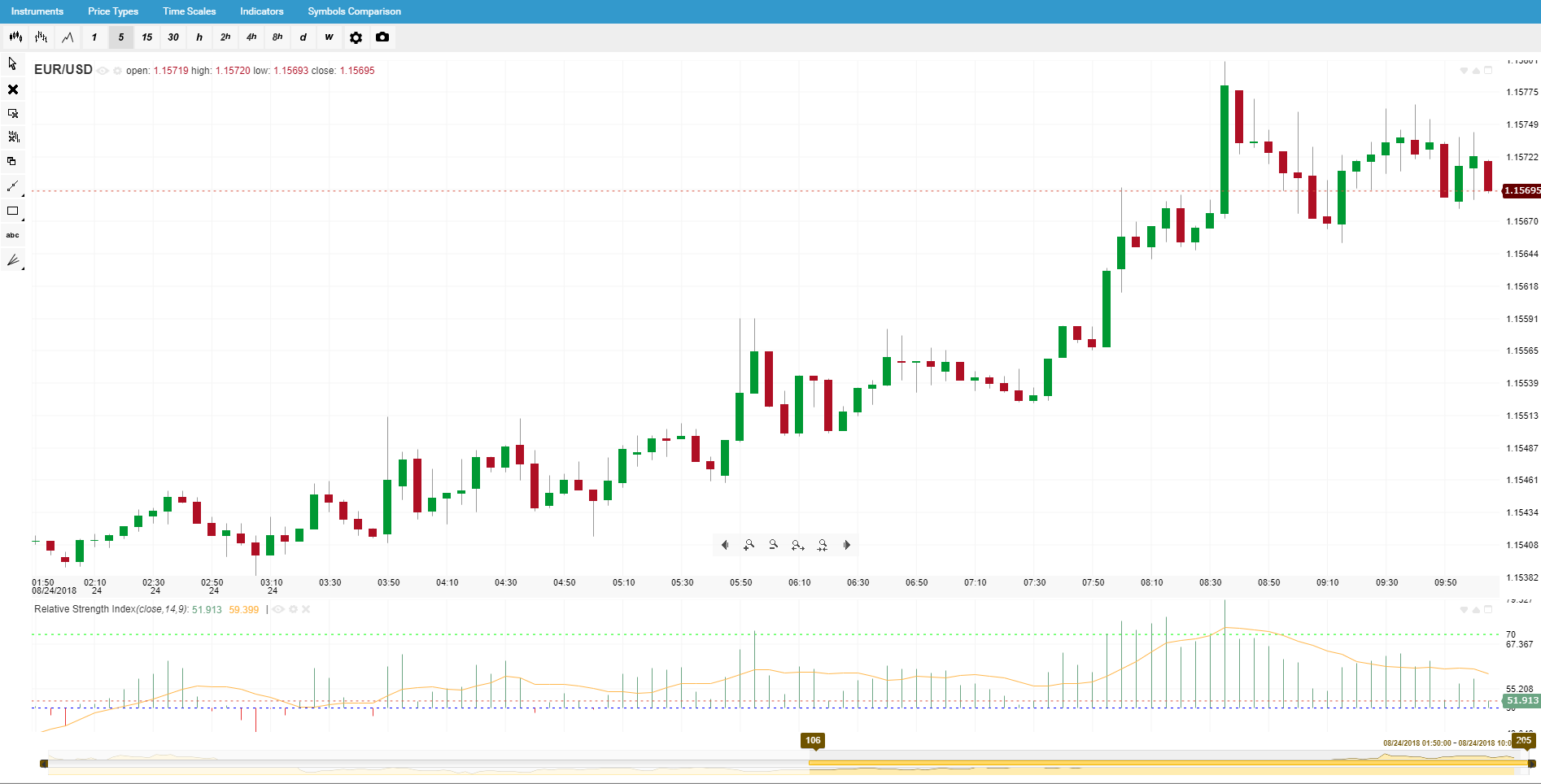
RSI oscillates between the range of
0-100 if the price moves below 30 that means it is in the oversold region, if
the price moves above 70 that means it is in the overbought region. Why is this
important though?
If an asset is oversold or
overbought, there is high probability the current trend will undergo a reversal.
Another way certain traders use RSI (cross-referencing it against other
indicators to avoid false signals) is using a drop below 30 as a “buy” signal
and a cross above the 70 level as a “sell” signal and anything in between a
sign to hold the position.
3.Moving
Average Convergence Divergence (MACD)
MACD is a slightly more complex in
calculation and analyzing: it is the difference between an asset’s 26-day and
12-day exponential moving averages and a 9-day EMA is plotted on the MACD also.
These EMA’s are a variation of moving averages that puts emphasis on more
recent prices.

The MACD points towards a bullish
trend when it moves above the 9-day EMA. As you can see in the image above,
MACD indicator features a histogram, when the asset is in an uptrend it
expands, whereas when its in a downtrend it contracts.
4.
Alligator
Easily the most colorfully named
indicator the Williams Alligator Indicator is composed of three normalized moving
averages, calculated each to 5, 8, 13 periods which smooths out the indicator’s
movement.
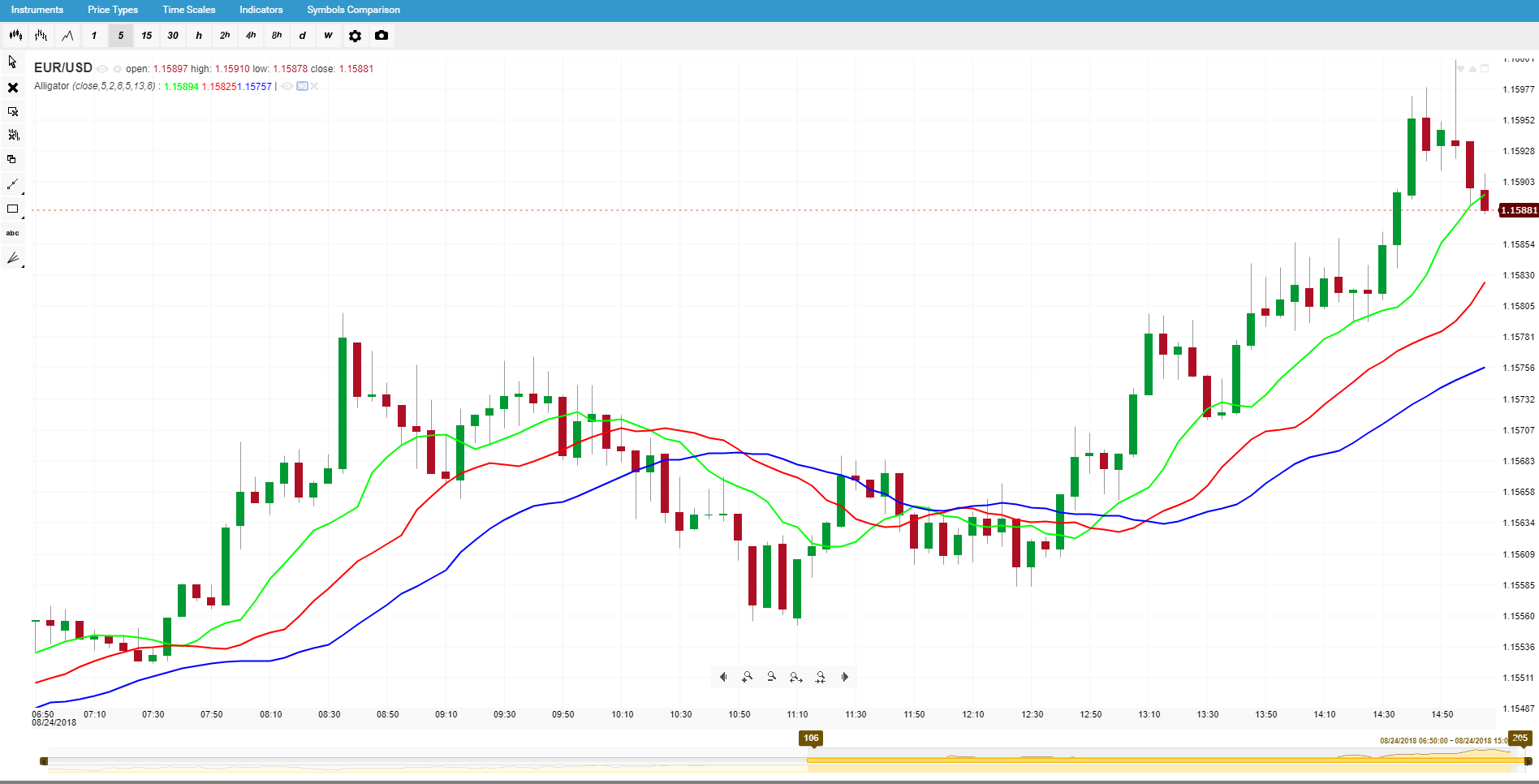
This indicator uses a loose variation
of the 80/20 principle, stipulating that the market moves – 15-30% of the time,
the remaining time moving more or less sideways. The creator of this indicator
believed that most traders (institutional or retail) exit positions at a higher
frequency when markets are their most volatile.
The three parts of the alligator are
similar to its terrifying real-world equivalent:
-Lips (the green) smoothed by the
following three bars after a 5 bar SMMA
-Teeth (the red) smoothed by 5 bars
following 8 bar SMMA
-Jaw (the blue) smoothed by 8 bars following
13 bar SMMA
As you might have extrapolated from
the breakdown, the Lips move the quickest and the Jaw the slowest. If the Lips
cross through the other lines downwards a short signal is given, if it moves
inversely (from the bottom of the chart to the top) a long signal is given.
When the Lips are going down and
cross the Teeth and Jaw the alligator’s sleeping
the opposite is the alligator waking up
according again to the creator. When the three lines are spread apart moving up
or down, this is the alligator eating
with its mouth wide open. This gives the signal of a general continuing
trend when position should be held – according again to Williams.
5.
Bollinger Bands
One of the most popular indicators in
recent years and is visually similar to William’s alligator, but instead of
using just moving averages with different timeframes, it also uses standard
deviations to plot its lines. The reason many traders swear by the Bollinger
Bands indicator is due to it giving more specific short and long signals
(comparable to other indicators).
As you can see below where the high
price crosses the upper band, a short signal is given and where the low price
crosses the lower band, a long signal is given (highlighted by circles on the
EUR/USD chart below).
Bollinger bands also occasionally
act like support and resistance, like other indicator do (highlighted by
squares below).
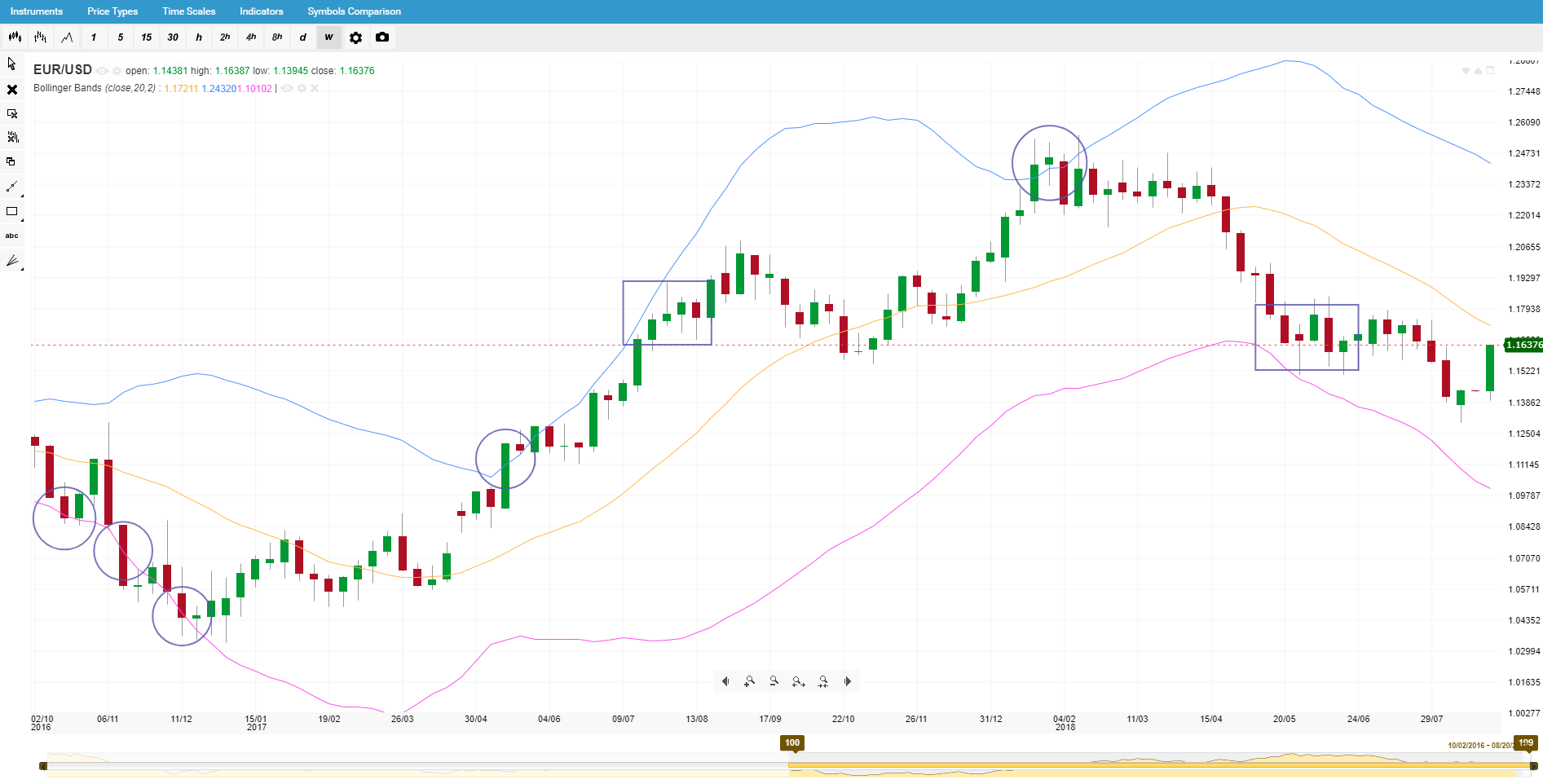
Bollinger Bands also help traders
identify periods of volatility, as the upper and lower bands will converge when
volatility is lower as they diverge when volatility increases. You can see that
many of the signals in the chart above are given during what is called a
“squeeze”, or high volatility/time when the bands converge.
Beware
of the False Signal
The reason that makes trading so
exciting is the same reason that makes it risky – its volatility. A fool-proof
method to give accurate signals have yet to be invented. If there was you
probably wouldn’t be reading this article, you’d be on the markets!
This is why most traders, analysts
and general market-watchers use a combination of indicators to extrapolate
data. To further protect themselves against false signals and market volatility
many use risk management trading tools
offered by Forex brokers.
Planning for success is probably the
easiest part of trading but protecting your investment and trading account is
the most crucial. So, no matter which combination of indicators you use, make
sure you also have robust risk management strategy in place.
